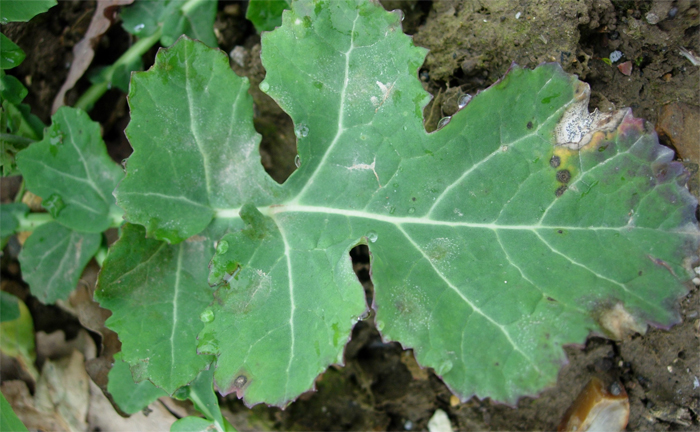
Disease forecasts and crop development suggest there is a real need for extra vigilance this year when dealing with phoma and light leaf spot.
Updated risk forecasts for both diseases in the 2013/14 season are now available from Rothamsted Research. Overall, the predicted risk of disease is lower than in recent years, however, the stage of crop development in the field may result in high disease pressure.
Early sown crops, which are now well established with fairly large plants (5-10 leaves), are at risk from light leaf spot but should escape phoma. Late-sown crops that are struggling to emerge, or with very small plants, will have missed the onset of light leaf spot but will be at risk from phoma infection.
The warm, dry summer slowed down the development of fruiting bodies in the fungi which cause both phoma leaf spot and light leaf spot. As a result, this autumn’s phoma epidemic is predicted to be mid to late onset. In spring 2014, light leaf spot is predicted to be lower in severity compared to recent years.
“The long drawn-out harvest has created a unique situation with effectively two different types of oilseed rape crop, each with its own issues with respect to disease,” said Dr Neal Evans, plant pathologist at Weather INnovations, who put together the forecast.
Early sown crops are inherently at greater risk of light leaf spot because of the polycyclic nature of the disease. Looking at phoma, the warm dry weather encountered in August and September means that phoma ascospores are only now being released, so these early crops have probably escaped the worst of the phoma epidemic.
In contrast, late sown, backward crops are likely to have missed the worst of the light leaf spot epidemic, but will be vulnerable to infection from the current flush of phoma spores.
